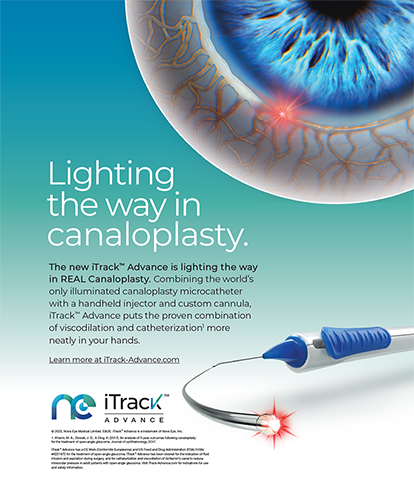Cover Stories | Jul 2005
5 Questions WithTakayuki Akahoshi, MD
Dr. Akahoshi comments on efficiency in a high-volume setting and the advantages of his new phaco technique.
Takayuki Akahoshi, MD
What led to your developing a coaxial phaco system for implanting a 6-mm acrylic IOL through a sub–2-mm incision?
Although bimanual phacoemulsification seems to be enjoying a bit of a boom around the world, I do not believe it is suitable for my routine procedures. In bimanual phacoemulsification, the anterior chamber is unstable because of limited irrigation and the surgeon's inability to increase the parameters of the phaco machine. The procedure also takes longer and is associated with more complications. Furthermore, some bimanual surgeons are implanting an unfamiliar IOL designed for minimal inhibitory concentrations, but its long-term clinical results are questionable. Others make a third 3-mm incision to implant the lens, because the initial incision is damaged after cataract removal and does not seal properly. Making three incisions in a small eye seems excessive. It increases the risk of infection and may induce astigmatism. Coaxial phacoemulsification does not damage the wound and permits IOL implantation through the same incision, which seals without corneal hydration. A specially designed phaco sleeve for microincisional coaxial surgery enables phacoemulsification through a sub–2-mm incision. A new implantation method termed the countertraction implant technique enables the insertion of a 6-mm Acrysof lens through the same incision.
Do you believe the bimanual method will eventually be phased out? During the past 10 years, I have implanted more than 39,000 Acrysof IOLs and have developed a strong reliance on both the clinical performance and the results of this lens. My surgical goal is to remove the cataract and implant the best IOL, namely the Acrysof, in the most efficient, least invasive, and most comfortable manner for the patient. With the sub–2-mm coaxial phaco technique, I can easily attain this goal. All surgeons should choose the surgical technique that is most comfortable for them while also considering what is most beneficial for the patient. I have no intention of pushing my coaxial technique on other surgeons. Neither do I intend to eradicate the bimanual method. If surgeons regard bimanual as useless, it will die on its own.
You have developed various ophthalmic devices but have never applied any patents to your prechopping instruments. Why?
I believe phaco prechop is a superb technique for reducing ultrasonic energy and easily and safely facilitating phacoemulsification. I wanted to introduce it to as many surgeons in the world as possible. Had I patented the prechoppers, their price would have increased, thus hindering the development and dissemination of the technique. Currently, the prechoppers are produced by companies in countries around the world, including India, Russia, China, Germany, the United Kingdom, and the US. The quality and efficacy of the instruments vary from company to company. Whenever I have the opportunity, I provide companies with feedback on how to improve their products. I regret that I cannot comment on all of them and am sorry that some subpar instruments are sold with my name on them.
When did the Mitsui Memorial Hospital in Tokyo begin hosting the Annual Cataract Live Surgery Symposium, and how has it evolved?
For the past 6 years, the Annual Cataract Live Surgery Symposium at the Mitsui Memorial Hospital has featured discussions and demonstrations of state-of-the-art cataract surgery techniques in live surgeries. Top cataract surgeons from Japan are invited to perform, and the procedures are satellite-linked and broadcast. Videos and DVDs of the procedures are made available as educational materials and used throughout Japan. A broader professional goal of mine is to increase the exposure of modern phaco surgery. I spent more than one-third of last year abroad giving educational lectures and performing live surgeries. This year, I have already traveled extensively to demonstrate the sub–2-mm coaxial phaco procedure.
You perform more than 5,000 cataract cases per year. How do you achieve such a high surgical volume?
Mitsui Memorial Hospital is owned by the Mitsui-Sumitomo group, but it is also a charity hospital. My salary from the hospital is fixed, and I may perform anywhere from 50 to 500 cases per month. My personal policy is to offer patients the best surgical treatment possible using the finest surgical equipment and advanced techniques. Additionally, there are more than 500 ophthalmologists in the Tokyo area who consistently refer patients to me. The patients and referring physicians are both pleased by this arrangement, which is a contributing factor to my surgical volume, recorded as the highest of any ophthalmologist in Japan.


